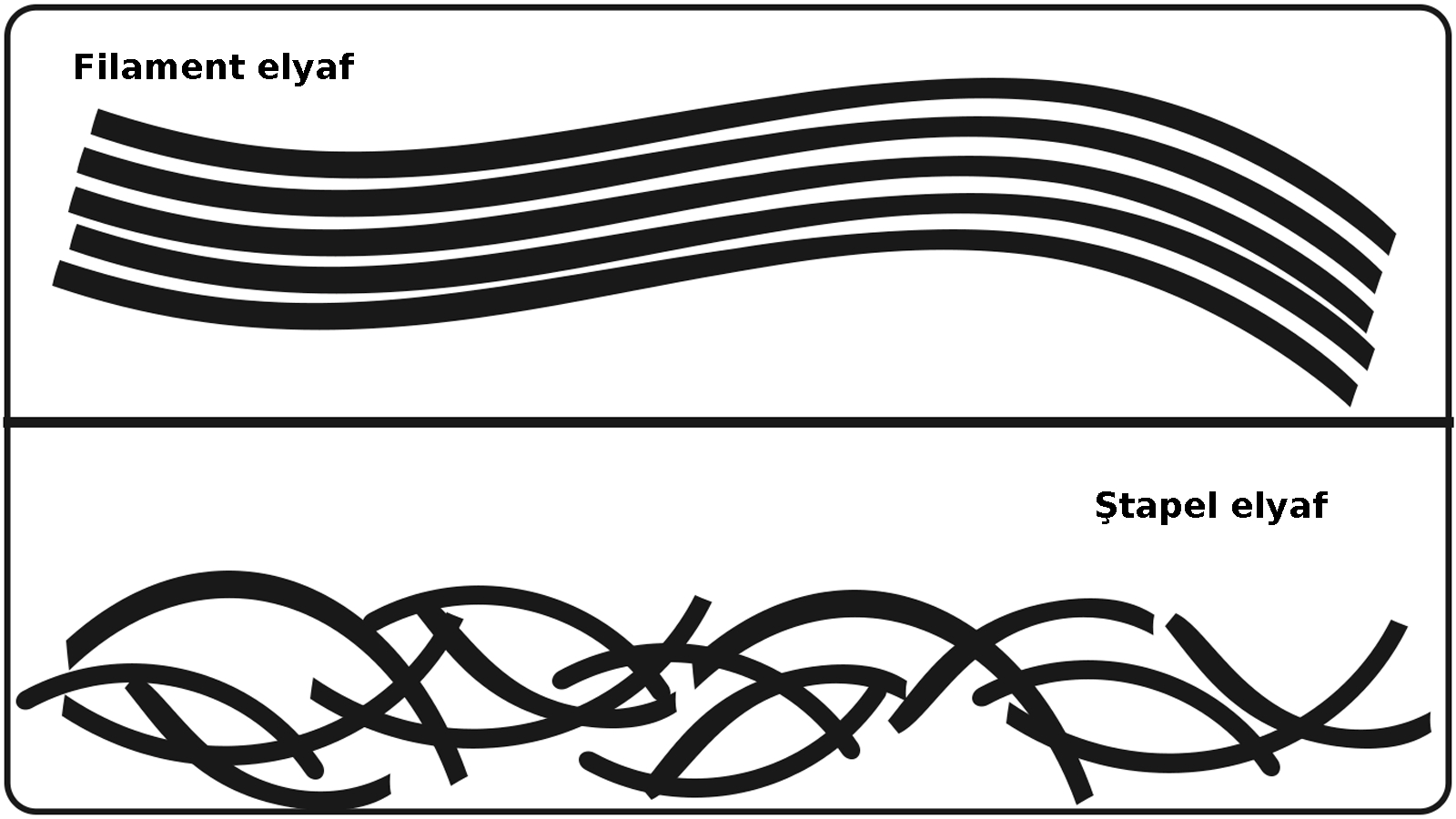Elastane Fiber
15:59
0 comments
Elastane (EL), (in the USA and Asia spandex fiber) is an extremely stretchable chemical fiber with high elasticity, which is spun as filament yarns (mostly as multifilaments, yarn count 11-2 600 dtex) and processed into textile products. The underlying block copolymer has a mass fraction of at least 85 % polyurethane. Even when stretched to three times its original length, the fiber returns to almost its original length after the load has been released. It is similar to rubber, but has a higher strength and is more durable.
The first fibers made from elastane came onto the market in 1959 as Fiber K after Joseph Shivers developed a process for large-scale production at the American chemical company DuPont. It was glued multifilament yarn made of polyurethane. From 1962, Fiber K was sold in large quantities under the Lycra brand, which has been held in Germany by the Invista company since January 28, 2005. Two years later, Bayer AG began manufacturing Dorlastan, a multifilament yarn made from polyester urethane. Other brands are creora (Hyosung), Linel (Fillattice) and Elaspan (Invista).
Manufacture and construction
The most common manufacturing process for elastane filaments is multi-stage. First, simple linear polyurethanes are formed using the diisocyanate polyaddition process. The production of a polyurethane from butylene glycol and hexamethylene diisocyanate is well suited for fiber production. To form the elastomeric polyurethane block copolymer, a segmented polyurethane, a large part of the glycol is replaced by long-chain dihydroxy compounds (macrodiols) based on polyether or polyester with terminal OH groups during the polyaddition reaction. The macrodiols result in an amorphous structure (the soft segments) and are very mobile under load and are therefore the cause of the very high elongation of a few 100 %. If they are converted into macrodiisocyanates (diisocyanate prepolymers) via the terminal OH groups with diisocyanates, these can be chain-extended with short-chain diamines (e.g. ethylenediamine or m-xylylenediamine) or dialcohols (ethylene glycol or 1,4-butanediol) be converted into segmented polyurethanes (block copolymers). The bridges that form within the linear macromolecules between the long-chain soft segments result in the hard segments as short-chain crystalline urea or carbamide structures. They determine the strength and thermal properties of the elastane filaments. The length of the short-chain crystalline area is approximately 2.5-3 nm, that of the soft chains approximately 15-30 nm.
-
Ayakkabılarda doğru numara seçimi sağlık ve kullanım ömrü açısından önem arz eder. Kesirli Ayakkabı Numaraları Ne Anlama Geliyor? 🤔 Bazı a...
-
İş sağlığı ve güvenliği için bazı işletmelerde pr ayakkabı kullanımı gereklidir. Ayakkabılarda rastladığımız "PR" terimi, İngiliz...
-
Mavi polycotton nevresim takımı. Polycotton , polyester ile pamuğu (cotton) karıştırarak elde edilen, her iki elyafın en iyi performans ...
-
Rahat bir kullanım için ayağın genişliği ve uzunluğuna uygun ayakkabıyı seçmek son derece önemlidir. Ayakkabı Genişlik Terimleri: E, F, FX,...
-
Yeşil renk ve tonları, sarı ile mavi ışığın birleşmesi sonucu oluşur ve fotosentetik pigmentler nedeniyle bitki yapraklarında yaygın olarak ...
-
Lif kısaltmaları tekstilde elbise üretiminin her aşamasında kullanılır. Tekstil, Kumaş, Lif ve Elyaf Kısaltmaları : Tekstil endüstrisi, lif...
-
Kumaşın ön yüzünün ve arka yüzünün gösterimi. Kumaş yüzü (Alm. Stoffvorderseite, Fr. front de tissue, İng. fabric face; face of fab...
-
Çizme ve botlarda; konç genişliği, ağız genişliği, topuk boyu, tarak genişliği ve taban iç uzunluğu. Konç, bot, çizme, ayakkabı , çorap vb...
-
İngilizce renkler. İngilizcede renk kelimesi Amerikan İngilizcesinde "color", İngilizce İngilizcesinde "colour" olarak ...
-
Ütü parlaması çok yoğun ise elbise kullanılmaz hale gelir. Ütü yaparken özellikle pantolon gibi hassas kıyafetlerde parlama oluşabilir. Ütü...
-
Türk tekstil ve hazır giyim sektörü: yerli markaların yükselişi. Türkiye'nin lokomotif sektörlerinden biri olan tekstil ve hazır giyim...
-
Akrilik elyaf, iyi yalıtım özelliğine sahip olmasıyla öne çıkan sentetik bir lif türüdür. Akrilik Elyaf: Tanım ve Özellikler Akrilik, ( Alm....
-
Kumaş numunesi. 1) Yapılarına göre (nasıl yapıldıysa o ismi alır) a) Dokunmamış kumaşlar - Nonwoven , keçeler, kağıt telalar, elyaf, vi...
-
Ünlü Türk modacı ve tasarımcılarının kreasyonları artık dünya moda başkentlerinde sergileniyor. Türkiye'de tekstil ve moda sektörünü...
-
Farklı renk ve türdeki kumaş çeşitleri. Kumaş, ipliklerin, çeşitli yöntemlerle bir araya getirilerek oluşturduğu kaplayıcı yüzeylerd...
-
Türk ayakkabı markaları, yerli ham maddeyi mükemmel işçilik ve estetik tasarımlarla birleştiriyor. Türk malı ayakkabı ürünler, kalitesi ve e...
-
Dünyanın en meşhur modacıları. Dünyaca ünlü modacılar Her sezon önce podyumları sonra da vitrinleri süsleyen özel koleksiyonların arkas...
-
Lif kısaltmaları tekstilde elbise üretiminin her aşamasında kullanılır. Tekstil, Kumaş, Lif ve Elyaf Kısaltmaları : Tekstil endüstrisi, lif...
-
Naylon olarak da bilinen polyamid kumaşlar sentetik kökenli bir kumaş türüdür. Polyamid ya da naylon (Alm. Polyamidfaser, Fr. fibre ...
-
Tekstil ürünlerinin etiketlerinde yıkama, kurutma ve ütüleme ile ilgili semboller bulunur. Tekstil Ürünleri için Tavsiye Edilen Yıkama Tali...




















































































































0 yorum:
Yorum Gönder
Merhaba, daha kaliteli bir site için yorumlarınızı bekliyoruz.